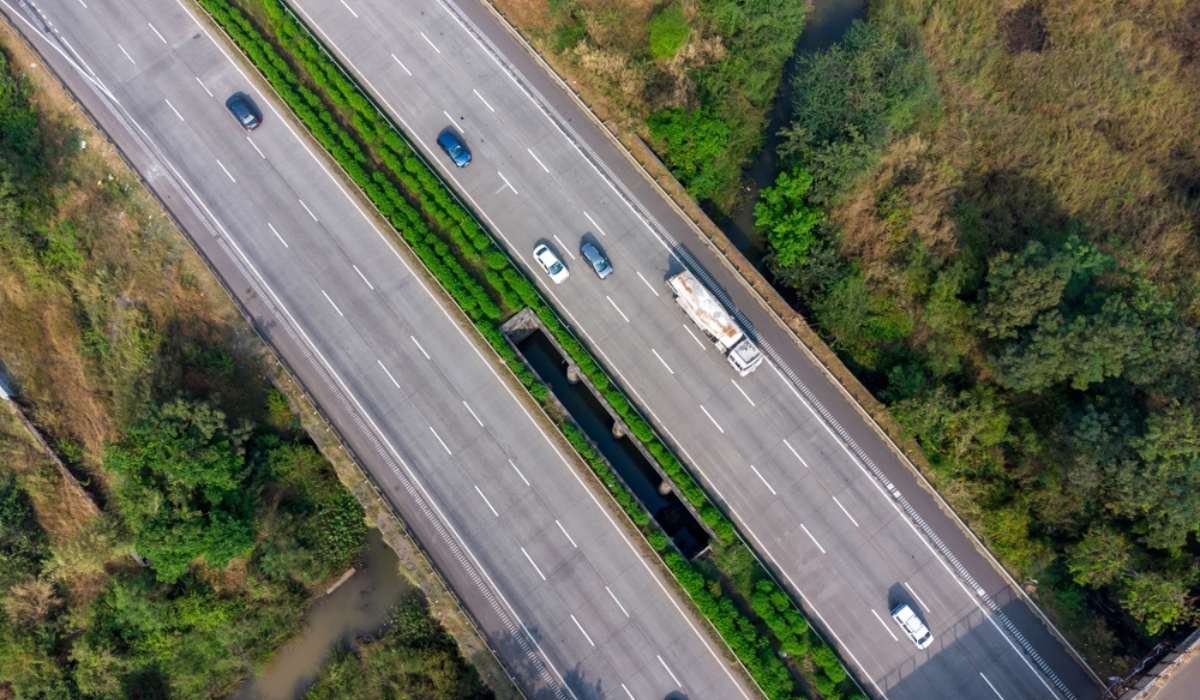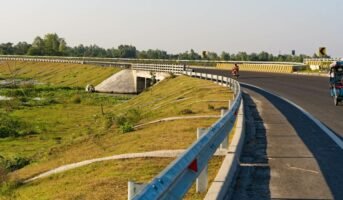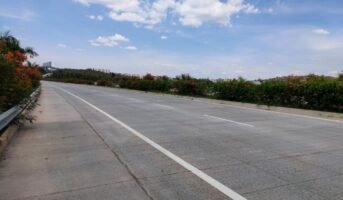Expressways and highways are vital infrastructure for economic growth and development in India. Well-planned roads boost connectivity, mobility and ease of transportation. One such project underway in Bihar is the ambitious Amas-Darbhanga Expressway. Once completed, this 6-lane access-controlled expressway will substantially cut travel time between the two cities and act as a catalyst for progress in the region.
See also: NH31: Connecting Uttar Pradesh, Bihar and West Bengal
The Amas-Darbhanga Expressway project was announced in October 2020 as part of the Modi government’s special package for poll-bound Bihar. In December 2020, the National Highways Authority of India (NHAI) floated tenders for appointing a consultant for feasibility studies, detailed project reports and authority engineer services.
In March 2021, the Bihar cabinet approved the expressway plan proposed by the Road Construction Department (RCD). Land acquisition is currently underway. The total project cost is estimated at ₹10,000 crore spread over 3-4 years.
Here are some key details about this upcoming four-lane expressway:
- Length – 189 kms
- Connecting Cities – Amas in Gaya district to Darbhanga
- Important Towns Enroute – Bodh Gaya, Rajgir, Bihar Sharif
- Estimated Travel Time – 2 hours (down from 5-6 hours currently)
- Projected Traffic – Over 15,000 vehicles per day by 2024
- Access Control – Fully access controlled with no intersections, entry/exit only through interchanges
- Facilities – Rest areas, fuel stations, hotels, hospitals, service roads
- Land Acquisition – Around 1300 acre over 56 villages
- Construction Target – Complete in 3-4 years
- Project Cost – ₹5,000 crore
Routes to be covered
The proposed expressway will begin at Amas and traverse across several towns and cities in a southeast direction via NH-122 and NH-31 before terminating at Darbhanga. The important route alignment is as below:
Amas – Bodh Gaya – Rajgir – Bihar Sharif – Barauni – Begusarai – Khagaria – Mansi – Saharsa – Madhepura – Darbhanga
This direct expressway connectivity will provide a major boost to tourism across Bodh Gaya, Rajgir and the entire Buddhist circuit in Bihar which witnesses both domestic and international visitors.
In January 2021, NHAI invited bids for appointing a consultant to conduct feasibility studies and detailed project report (DPR) in four months, at a cost of ₹5.5 crore.
Larsen & Toubro Ltd was awarded the contract for the Amas-Darbhanga Expressway DPR and pre-construction activities. They have prior experience working on the ambitious Mumbai-Vadodara Expressway project.
The actual civil construction tender is yet to be issued during the land acquisition stage. Reputed infrastructure companies like Dilip Buildcon, Ashoka Buildcon and others are expected to bid for the huge project.
Once complete, this expressway will significantly improve connectivity and accessibility between Amas and Darbhanga. The travel time savings and smooth traffic flow will boost tourism, agriculture and industrial growth across this belt. Although land acquisition poses challenges, cooperation from local communities will help realise this infrastructure priority for Bihar. The Amas-Darbhanga Expressway holds tremendous potential for accelerating development in the state.
Real estate impact
The construction of the Amas-Darbhanga Expressway is poised to have a significant impact on the real estate sector in the areas it traverses through and connects. Here’s how:
Rise in property values
As the expressway enhances connectivity between Amas, Bodh Gaya, Rajgir, Bihar Sharif and Darbhanga, properties along or in close proximity to the route are likely to experience an increase in value. Improved accessibility often leads to higher demand for residential, commercial and industrial properties, thereby pushing up prices.
Development of satellite towns
The towns and cities along the expressway route, such as Bodh Gaya and Rajgir, may witness rapid urbanisation and development. This could lead to the emergence of satellite towns as people seek housing options in areas offering convenient access to the expressway for commuting purposes.
Infrastructure development
Along with the expressway construction, infrastructure development initiatives are likely to follow suit. This includes the establishment of amenities such as schools, hospitals, shopping centres and recreational facilities to cater to the needs of the growing population. Real estate developers may capitalise on this trend by investing in projects that cater to the rising demand for housing and commercial spaces.
Tourism infrastructure
The expressway’s proximity to tourist destinations like Bodh Gaya and Rajgir could lead to the development of tourism-related infrastructure such as hotels, resorts and recreational facilities. Real estate developers may explore opportunities to invest in hospitality projects to cater to the influx of tourists expected due to improved accessibility.
Residential development
With reduced travel time between cities, the expressway may attract commuters who prefer living in suburban or rural areas while working in urban centres. This could drive demand for residential properties along the expressway corridor, leading to the development of gated communities, plotted developments and affordable housing projects.
Land acquisition and rehabilitation
While the expressway construction may necessitate land acquisition, it also presents opportunities for those whose land is acquired for compensation. Some landowners may choose to reinvest their compensation in real estate, either by purchasing land elsewhere or investing in property development projects.
Overall, the Amas-Darbhanga Expressway project is expected to catalyse real estate development and economic growth in the region, offering lucrative opportunities for investors, developers and stakeholders in the sector.
FAQs
The expressway is slated for completion in 3-4 years, likely by 2025-2026, if land acquisition proceeds smoothly.
The total budget is projected to be around ₹10,000 crore for the 129 km long, fully access controlled expressway.
It will improve connectivity to Bodh Gaya, Rajgir and other tourist spots, encouraging more visitors. Travel time savings allow tourists to cover more destinations.
Rest areas, fuel pumps, hotels, hospitals, service roads for local commuters, interchanges for entry/exit access are planned along the expressway route.
Around 1300 acre of land over 56 villages will be acquired. Resettlement of affected people will be handled per NHAI rehabilitation policies.
Larsen & Toubro has been awarded the contract for feasibility study, DPR and pre-construction work. The main civil work tender is yet to be issued.
Better connectivity between Amas and Darbhanga will facilitate faster movement of agricultural produce, raw materials and industrial goods. When is the Amas-Darbhanga Expressway expected to be completed?
What is the estimated budget for the expressway project?
How will the expressway boost tourism in Bihar?
What facilities will the expressway provide?
How will local communities be impacted?
Who is constructing the Amas-Darbhanga Expressway?
How will this expressway benefit trade and commerce?
| Got any questions or point of view on our article? We would love to hear from you. Write to our Editor-in-Chief Jhumur Ghosh at [email protected] |

Upasana Mandhata, currently in her final year of Law, is pursuing a BA LLB Degree at VIT University Chennai. Her interest in content creation dates back to her school and college years when she discovered a writing passion. Drawing from personal experiences, her writing style has been shaped by her journey and encounters. She enjoys experimenting with new recipes, painting, or swimming while clocking out of work time.











